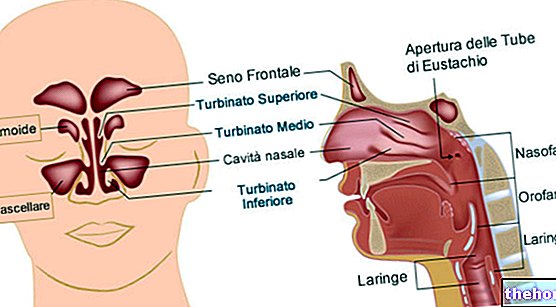Under normal conditions, the uterus assumes an antiflex and antiverse position in the pelvic cavity that accommodates it. However, women in which the uterus assumes a retroverted, retroflex or retroverted flexion position are not uncommon.

Uterus
From a macroscopic point of view, the uterus is didactically divided into at least two regions, which have different structures, functions and diseases:
- body of the uterus: upper portion, more expanded and voluminous
- neck of the uterus or cervix: lower portion, more curved and smaller, which continues inferiorly with the vagina
in addition to these regions, the following are also identified:
- isthmus of the uterus: narrowing that divides the body and neck of the uterus
- fundus or base of the uterus: portion of the uterine cavity located above the imaginary line that joins the two fallopian tubes, facing forward

Flexion and release
As anticipated, in normal conditions, the uterus assumes an antiflex and antiverse position in the pelvic cavity that welcomes it. To understand these concepts it is necessary to observe the uterus of an adult woman from the side.
- flexion: angle established between the axis of the body of the uterus and the axis of the cervix
→ antiflexion: the angle between these two axes is open forward, towards the pubic symphysis. As shown in the figure, the uterus is normally in antiflexion of about 120-140 ° → retroflection: the angle between these two axes is open to the back (facing the rectum)
- version: angle established between the vagina and the cervix
→ anteversion: in normal conditions the angle between these two axes is about 90 ° → retroversion: the angle between these two axes is> 90 °
- first degree: angle> 90 ° and <180 °
- second degree: retroversion of about 180 °: uterus and vagina are on the same axis
- third degree: angle> 180 °

Simplifying the concepts as much as possible, we can therefore talk about:
- retroflex uterus: instead of towards the abdomen, the uterus is tilted towards the back
- retroverted uterus: the angle between the cervix and the vagina is greater than 90 degrees

Looking at the figure, it is easy to understand how, by increasing the abdominal pressure (e.g. with a cough), a retroverted and retroverted grade two uterus (180 °) tends to descend more easily into the vagina, creating the prerequisite for prolapse. of the uterus.
In general, the position of the uterus does not in itself have important repercussions on a woman's fertility, since the uterus being a very flexible organ, it modifies and changes shape and position as the fetus grows. Rarely, the compressive effect of the retroverted gravid uterus on the bladder neck can result in urinary retention.
Retroverted Uterus - Causes and Symptoms









.jpg)


















